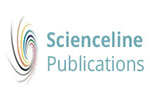(2024) The Effects of Saturated and Polyunsaturated Fatty Acids on Reproductive Performance and Reproductive Hormonal Changes in Dairy Cows at the Transition Period. World's Veterinary Journal. pp. 184-193. ISSN 2322-4568
|
Text
WVJ14(2) 184-193,2024.pdf - Published Version Download (422kB) |
Abstract
Reproductive success is crucial in dairy farming as it heavily relies on the consumption of a complete mixed ration for the diet. The current study investigated the effects of adding saturated (SFA) and polyunsaturated fatty acids (PUFAs) to dairy cows’ diets on reproductive performance and reproductive hormones during the transition period. A total of 30 Holstein dairy cows were randomly divided into three groups (10 animals in each group), based on parity and body condition score. The cows had an initial body weight of 567.5 ± 40.3 kg (mean ± SD), a body condition score of 3.5 ± 0.26 out of 5 (mean ± SD), and a parity of 1.7 ± 0.02 (mean ± SD). The control group received a balanced ration meeting all the nutrient requirements according to the National Research Council (NRC) guidelines. The SFA group received 1.4 of dry matter (DM) as palm oil (RumiFat®), while the omega group had 5 of DM as safflower (a source of n-6 fatty acids) added from 21 days before parturition to 21 days after, and 4 of DM as flaxseed (a source of n-3 fatty acids) added from 21 to 42 days after parturition. In the Omega group, estradiol concentration significantly increased on artificial insemination (AI) day (12.54 pg/mL). Additionally, serum prostaglandin F2-alpha concentration was significantly higher in the omega group (0.732 pg/mL on day 7 and 1.68 pg/mL on day 14) compared to other groups. The control group exhibited the highest progesterone concentrations at 14 and 21 days post-calving compared to the other groups, other groups. whereas the omega group highest concentration five days after AI. The omega group also showed a significantly higher mean number of follicles >10mm and larger ovulatory follicle diameter. Moreover, a higher percentage of pregnant cows at 120 days in milk, fewer open days, and lower service per conception were observed in the omega group compared to the other groups. In conclusion, supplementing dairy cows’ diets with PUFAs during the transition period positively influenced ovarian function, hormone levels, and reproductive performance. Open Access: This article is licensed under a Creative Commons Attribution 4.0 International License, which permits use, sharing, adaptation, distribution and reproduction in any medium or format, as long as you give appropriate credit to the original author(s) and the source, provide a link to the Creative Commons licence, and indicate if changes were made. The images or other third party material in this article are included in the article’s Creative Commons licence, unless indicated otherwise in a credit line to the material. If material is not included in the article’s Creative Commons licence and your intended use is not permitted by statutory regulation or exceeds the permitted use, you will need to obtain permission directly from the copyright holder. To view a copy of this licence, visit https://creativecommons.org/licenses/by/4.0/. © The Author(s) 2024
| Item Type: | Article |
|---|---|
| Keywords: | estradiol; omega 3 fatty acid; omega 6 fatty acid; palm oil; polyunsaturated fatty acid; progesterone; prostaglandin F2 alpha; saturated fatty acid, adult; animal experiment; animal tissue; Article; artificial insemination; body constitution; body weight; childbirth; conception; controlled study; cow milk; dairy cattle; diet supplementation; estradiol blood level; female; Holstein cattle; hormone determination; linseed; nonhuman; nutrient; nutritional requirement; ovary follicle; ovary function; parity; practice guideline; pregnancy; progesterone blood level; prostaglandin blood level; randomization; reproductive success; safflower |
| Subjects: | S Agriculture > SF Animal culture |
| Divisions: | World's Veterinary Journal (WVJ) |
| Page Range: | pp. 184-193 |
| Journal or Publication Title: | World's Veterinary Journal |
| Journal Index: | Scopus |
| Volume: | 14 |
| Number: | 2 |
| Publisher: | science |
| Identification Number: | https://doi.org/10.54203/scil.2024.wvj23 |
| ISSN: | 2322-4568 |
| Depositing User: | Dr. Alireza Sadeghi |
| URI: | http://eprints.science-line.com/id/eprint/1205 |
Actions (login required)
 |
View Item |


 Dimensions
Dimensions Dimensions
Dimensions